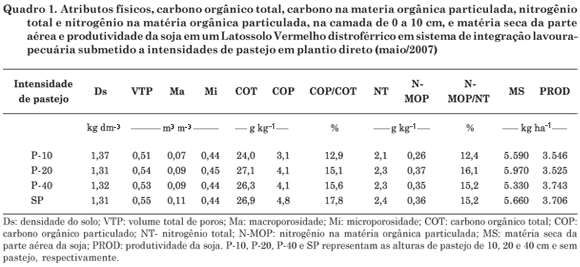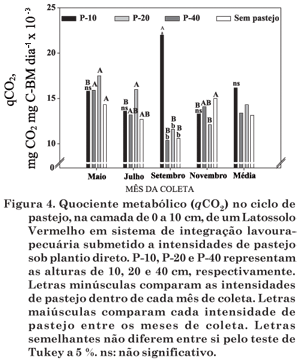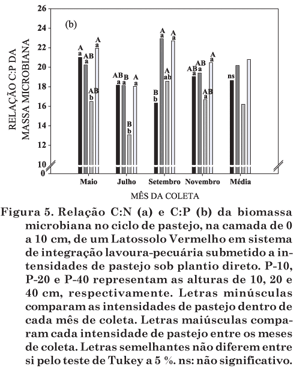In integrated crop-livestock systems most of the nutrient supply for a pasture is provided by animal excretions, in the form of manure or urine, stimulating the activity and accumulation of nutrients in the cells. This study was carried out in an integrated crop-livestock system under no-tillage, initiated in 2001, with the objective of evaluating the impact of different winter grazing intensities (black oat + Italian ryegrass; 10, 20, and 40 cm, and a no-grazing control treatment) on microbial activity and on carbon, nitrogen and phosphorus concentration and stocks in microbial biomass in the 0-10 cm layer of an Oxisol (Latosol), in southern Brazil, during a grazing cycle. Biomass nutrient contents and stocks and microbial activity were affected by grazing intensities and by the season of the grazing cycle. Microbial carbon and phosphorus contents increased in the beginning of the grazing cycle in May until the period of high phytomass production in September, after which these contents decreased, following the pasture senescence. On the other hand, microbial nitrogen decreased from May to November, possibly as a result of plant uptake of soil N. Integrated crop-livestock systems under no-tillage maintain soil biological quality, and are, under adequate grazing intensity, similar to no-tillage systems without grazing influence. However, at high grazing intensities (10 cm) under water stress, this soil quality is negatively affected.
Metabolic quotient; microbial nitrogen; microbial phosphorus













